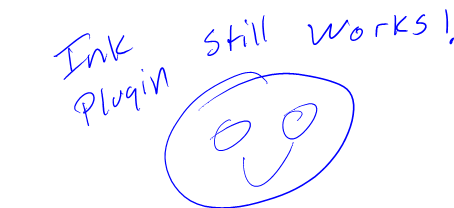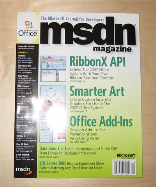 Once again, I had an itch that only some software could solve – what I wanted didn’t exist, so I wrote it…
Once again, I had an itch that only some software could solve – what I wanted didn’t exist, so I wrote it…
Since our new arrival, I’ve wanted an easy, reliable and automated way to share photos with friends and family (and anyone else who wants to take a look at the cutest baby ever 🙂 ).
I could have just created a share on my home server and done it through IIS, but I really didn’t want to waste all the bandwidth on my cable modem, so I really needed an external server to host everything. I usually use Flickr for this, but with all the photos coming in, it was getting hard to upload them all manually.
Since I have started using Windows Home Server (WHS) to store my home media and photos, I thought it would be really nice to have a way to automatically synchronize the photos on WHS “Photos” folder to my Flickr account. Since WHS is still in beta, there is not a 3rd party application to do this – so I decided to write PhotoSync for WHS (probably also has something to do with my constant pursuit of learning cool new products and their SDKs).
Some general features & notes:
- PhotoSync will monitor your WHS Photos folder (or any sub folder you select) and automatically upload the contents of that folder (and every sub folder) to your Flickr account.
- Since you get to select the ‘base folder’ you can, for example, create a /Photos/Private and a /Photos/Public (or /Photos/Flickr) folder in WHS and just point PhotoSync to the /Public folder – this makes sure your public photos go to Flicker and the private ones do not.
- PhotoSync can be configured to automatically upload new photos on any scheduled basis (the minimum right now is every 15 minutes)
- There is a WHS Console GUI Tab to configure everything, and check upload status information.
Installation:
- Download the msi file (link below)
- Follow the steps from the WHS help file to install an Add-In: (don’t worry, it looks like a lot of steps, but it is painless)
- On a home computer, right-click the Windows Home Server task tray icon, and then click Shared Folders.
- In Shared Folders, double-click the Software folder.
- Double-click the Add-Ins folder.
- Copy the .msi file to the Add-ins folder.
- Close the Add-ins folder.
- Right-click the Windows Home Server task tray icon, and then click Windows Home Server Console.
- Type the Windows Home Server password, and then click Next.
- Click Settings on the console.
- On Windows Home Server Settings, click Add-ins.
- Click the Available tab.
- Click Install to install the Add-in.
- Click OK on the Installation succeeded dialog box to restart the console.
- Reconnect to the console. If your new Add-in includes a console tab, the new tab now appears on the console.
- Once you have PhotoSync installed, you can go to the WHS Console Tab to configure it
- The first time you run PhotoSync, you will need to configure it to “link” to your existing Flickr account:
- You will be prompted with a brief instruction screen, read and hit continue
- PhotoSync will launch the web browser to the Flickr Login screen, login as normal
- You will be asked if it is ok to Link WHSApps PhotoSync to your account you need to verify this, and give it write permissions
- Once you’ve done this Flickr will tell you it is Linked, and prompt you to close your browser.
- Once you close the browser, you will see a button in PhotoSync that says “I have completed linking Flickr“, click it and you will see a message telling you it linked ok and is ready to go.
- Note: Due to the strict security on IE7/Windows 2003 server, you may see a few alerts during the web browser step. This is normal, just read them and respond accordingly
Using PhotoSync:
- Right now there are only two configurable options in PhotoSync (don’t worry, I’m already working on additional features!)
- PhotoSync folder – this is the root folder PhotoSync will upload photos from. It will include all sub-folders too
- Sync Schedule – this allows you to configure how often PhotoSync will check for and upload new photos. If you enter anything here under 15 minutes, it will default to 15 minutes.
- There is also some status information that tells how many photos total are in sync, last sync time, and how many photos were uploaded in the last sync.
- That’s all there is too it – nice, simple, and reliable. Simply copy your photos to your configured WHS folder, and PhotoSync does the rest!
As I mentioned, I have several additional features planned for the app, but please share any suggestions or comments you have in the comments here, or send me a message. I hope you enjoy PhotoSync!
(Note: All the normal beta disclaimers apply here. It seems stable and works great for me, but it could catch your PC on fire, or make your dog bark all night :-). If you find any problems, please let me know)
Download PhotoSync for WHS here (1.5 MB)
 Google Announced Google Gears today, a new set of open source technologies that allows web applications to work ‘offline’ in a disconnected mode. This could be a HUGE benefit for Google (and other Web Applications) as they compete against Microsoft with their online suite of office-like applications.
Google Announced Google Gears today, a new set of open source technologies that allows web applications to work ‘offline’ in a disconnected mode. This could be a HUGE benefit for Google (and other Web Applications) as they compete against Microsoft with their online suite of office-like applications.

 I just came across a neat little utility called Package This that allows you to create an offline Windows Help File (.chm) from topics on
I just came across a neat little utility called Package This that allows you to create an offline Windows Help File (.chm) from topics on  Once again, I had an itch that only some software could solve – what I wanted didn’t exist, so I wrote it…
Once again, I had an itch that only some software could solve – what I wanted didn’t exist, so I wrote it… Well, I’m over a week late with this, but lack of sleep
Well, I’m over a week late with this, but lack of sleep